Mahabalipuram and Kanchipuram
- 2Nights/3Days
- Chennai – Kanchipuram – Mahabalipuram – Chennai
Visiting the cities of temples {Kanchipuram & Mahabalipuram}, where you will discover and experience the different culture and traditions. Kanchipuram is the oldest city of Tamil Nadu that has still managed to retain its Old Charm. It is situated on the western bank of River Palar. Attractive scenery as well as calm environment forms a nice combination that allures tourists to this spot. The City is famous for not only its temples but also for having been the capital city of the Pallava Kings.
Even today the city is sometimes called by its old names of "Kanchiampathi" and "Conjeevaram". There are numerous temples of historical importance here and thus this place is generally known as the "golden city of temples". Kanchipuram silk saris are acclaimed across the world, the silk thread interwoven with gold zari, was not only the favorite of the women of the glorious past, but also of the modern times. It is not only an adored aspect of Indian clothing, especially in the South, but is also a traditional and cultural aspect of the Tamils.
These shrines not only have intricate designs and traditional architect but also include the fascinating mythological tales that enchant the pilgrims. It is considered one of the most pious destinations of south India. Kanchipuram is a revered city for the Hindus since it is among one of the seven holiest places that every Hindu should visit during their lifetime. The city is a sacred place for the devotees of Lord Shiva as well as Lord Vishnu. Legend has it that the city got its name because of the numerous Lord Vishnu temples that are built within the city premises.
"Ka" stands for Lord Brahma who is believed to have "anchi" or worshipped Lord Vishnu in this city thus, giving the place the name of Kanchipuram. However, there are many Shiva temples also in the city. The west side of Kanchipuram is called Siva Kanchi because it has the maximum number of Shiva temples and the east side of the city is called Vishnu Kanchi.
History of Kanchipuram since the city has a glorious historical past. The Pallava Kings made Kanchi their capital between the 3rd and the 9th centuries. The Pallavas put in a lot of effort and money to make the city worth being their capital. They built strong roads, building structures, ramparts as well as wide moats in and around the city. The Pallavas traded with Chinese traders and the city of Kanchipuram is mentioned in a travelogue by Chinese traveler, Xuanzang who came to the city sometime in the seventh century. In his travelogue he writes that the city had brave, kind and learned people who also believed in social justice.
In the 11th century the Chola Kings took over the reign of Kanchipuram and ruled the city until the 14th century. The Cholas did not make Kanchi their capital but it was an important city even then. In fact, the Chola Kings carried out lot of construction in the city and even started expanding it towards the eastern side. From the 14th century until the 17th century the Vijayanagra dynasty had political control over Kanchipuram.
Sometime towards the end of the 17th century the Marathas took over the city but soon lost it to Aurangzeb, the Mughal Emperor. With the advent of French and British traders to India, the city was soon under the control of the British Empire and was ruled by British General Robert Clive.
This rich historical past of the city is still visible to the modern travelers. Influences of different cultures can be seen in the art and architecture of the various constructions within the city. Today, the city is as famous for its temples as it is for its perfect amalgamation of the different Indian as well as western influences.
Mahabalipuram, there are many stories related to the origin of its name. Some say that, it has been named after the demon King Mahabali, who was famous for his kindness and on the other hand, others believe that it has been named after the King Narasimhavarman I of the Pallava dynasty, who was a great warrior and that his name was kept because his achievements. Whatever may have been the origin, one thing is for certain - Mahabalipuram is one of the most visited tourist destinations in Tamil Nadu. And together with Chennai and Kanchipuram, it forms 'Golden Tourism Triangle' on the shore of Coromandel Coast. In the 7th and 10th centuries, this place was a very active sea port of the Pallava Kingdom. This tourist destination has been listed amongst the UNESCO World Heritage Site because of its importance and ancientness of the sculptures and temples which depict its historical past and traditional legacy and also about the Dravidian civilization. Mahabalipuram art can be divided into four categories: open air base - relief, structured temples, man-made caves and rathas ('chariots' carved from single boulders, to resemble temples or chariots used in temple processions). The famous Arjuna's Penance and the Krishna Mandapa, adorn massive rocks near the centre of the village. The beautiful Shore Temple towers over the waves, behind a protective breakwater. Sixteen man-made caves in different stages of completion are also seen, scattered through the area.
History of Mahabalipuram, The temples of Mamallapuram, built largely during the reigns of Narasimhavarman and his successor Rajasimhavarman, showcase the movement from rock-cut architecture to structural building. The mandapas or pavilions and the rathas or shrines shaped as temple chariots are hewn from the granite rock face, while the famed Shore Temple, erected half a century later, is built from dressed what makes Mamallapuram so culturally resonant are the influences it absorbs and disseminates. All but one of the rathas from the first phase of Pallava architecture are modeled on the Budhist viharas or monasteries and chaitya halls with several cells arranged around a courtyard. Art historian Percy Brown, in fact, traces the possible roots of the Pallavan Mandapas to the similar rock-cut caves of Ajanta and Ellora. Referring to Narasimhavarman victory in AD 642 over the Chalukyan king Pulakesin II, Brown says the Pallavan king may have brought the sculptors and artisans back to Kanchi and Mamallapuram as 'spoils of war'.
The major attraction of Mahabalipuram is the Shore temple which is devoted to Lord Shiva and Lord Vishnu, sited on the Bay of Bengal with the gateway from the Western side away from the sea. It is one of the world heritage sites and also one of the ancient rock cut temples in the country. There are some Mandapas which were built during the Pallava dynasty. These Mandapas are very beautifully carved and are adorned with spell-bounding motifs. The biggest Mandapam is dedicated to Lord Krishna and the sculptures inside it marvellously portray the brave legends of Lord Krishna. Besides this, there is Mahishasuramardini Mandapam, which is a rock cut temple depicting the war between the Goddess Durga and the demon Mahishasura, who changed himself into a buffalo. This Mandapa is the finest example of the architectural designs of the Pallava dynasty; the carvings and the designs are simply splendid and breathtaking. The Ganesh Mandapam is another shrine which is visited everyday by the people. And there are many more temples & monuments. There is a fact that many of the temples and sculptures of Mamallapuram are unfinished, points to the sudden withdrawal of patronage from rock-cut temples when King Rajasimhavarman came to power.
Day 1 : Chennai - Kanchipuram - Mahabalipuram (140 kms / 2 hrs 40 mins)
Depart by surface towards Mahabalipuram. En route visit Kanchipuram - the erstwhile capital of the Pallavas and Cholas. Visit its numerous temples dedicated to various gods and goddesses. It is also home of weavers of the famed Kanchipuram silks.
Visit Kailasanathar Temple has the earliest traditional heritage values and carries reminiscence of 7th century style. It was constructed by the great king of the Pallavas, Rajasimha. Dravidian architect is intricately portrayed here. The temple is famous for exquisite carvings and attracts devotees and tourists alike. There are 58 small shrines situated around the main shrine, as a compound wall. Fresco style paintings adorn the inner walls of the temple. This is the first temple made of stones by Rajasimha Pallava. After the completion of the temple they fixed a date for Kumbabhisheham. Shiva came in the King's dream and asked him to postpone the date since he wanted to honour the invitation of Saint Poosalar for the Kumbabhisheham of his temple at Thirunindravoor which he (Poosalar) built brick by brick by mentally (not physically) just by sheer devotion. This is inscribed in the temple and Sekkizhar also has mentioned this in his work.
Local people & priest said that there are two idols of dancing Shiva and Parvati. When the aarti is raised, you see an angry Shiva and smiling Parvati and when it is lowered, you see a smiling Shiva and shy Parvati.
Then Visit Ekambareswarar Temple is the biggest temple in Kanchipuram. It is covers an area of 20 acres. The Pallava Kings built this temple to worship Lord Shiva but later it was handed over to Cholas and Rayas. The important feature of the temple is the "hallway with a thousand pillars", which was built by the Vijayanagar Kings. The temple's inner walls are covered with 1008 Shiva lingams. Tourists will also find 1000 pillared halls in the temple. The Mango tree here is legendary and supposed to be 3500 years old. The eleven-storey structure that is adorned with beautiful sculptures is one of the tallest temple towers in South India. Childless couples revere the ancient mango tree in the courtyard. They faithfully string small cradles to the branches of the tree with the hope that their desire for an offspring will be fulfilled.
Also in the temple, there is a small panel depicting the story that tells of the temple's existence. Parvathi incurred Shiva's wrath when she made the mistake of playing a mischievous prank on him by covering his eyes for a second. Hindering Siva's vision for that one second led to years of darkness for the mortals, Shiva bade her to perform penance to obtain his forgiveness. It is believed that the temple was built on the spot where the lord forgave her.
Also Visit Devarajaswami Temple was established to keep the memory of the marriage between Lord Vishnu and Goddess Laxmi. That is why it has a wonderful marriage hall inside. The Devarajaswami Temple is a fine example of ancient art and architecture. The temple was built by the rulers of Vijayanagar in reverence of Lord Vishnu. The temple is located in the eastern part of the city of Kanchipuram. This temple consists of exquisitely carved pillars that give us a deep insight into the architecture as well as the technology of the times. The pillars are all hand carved and depict Hindu deities in their various forms. A unique feature of the temple is a humungous chain that is engraved on a stone. A statue of lord Vishnu of 10 meters lies immersed in a water tank built inside the temple. This statue of Vishnu can be viewed only once in forty years when the tank is entirely drained for the devotees to catch a glimpse of their Lord. The statue is immersed in water again only after 48 days.
Post lunch drive to Mahabalipuram, declared a world heritage site, too was part of the Pallavas dynasty and exhibits some of the most outstanding examples of the Dravidian style of art and architecture.
Overnight stay at hotel.
Day 2 : Mahabalipuram
Breakfast at hotel.
After breakfast full day devotional guided tour of Mahabalipuram.
Visit Shore temple was constructed during the 7th century by the special and highly skilled artisan, Rajasimha under the reign of Narasimha Varman. , it is a structural temple, and as a part of the Group of Monuments at Mahabalipuram, it has been classified as a World Heritage Site by UNESCO. It is cited as one of the ancient structural stone temples in the southern part of the country. A Sivalinga is enshrined within the Temple as is a shrine dedicated to Lord Vishnu. A small carved shrine of Goddess Durga on her vahana, the Lion is also prominently featured here. It is interesting to note the plurality of deities worshipped here as it is symbolic of an attempt to balance various religious beliefs and requirements. It is one of the earliest indicators of religious tolerance shown by rulers during the period it was built in.
Various artistic carvings can be witnessed throughout the temple. Three different buildings make up the temple. Two among them are Shiva temples that face east and west. The third one is a Vishnu temple. It is one of the major Mahabalipuram attractions.
After that visit Five Rathas, also popularly called as Panch Rathas, is a set of rock temples. It's a shining example of monolith Indian stone-cut architecture that dates back to the late part of the seventh century. Like the Shore Temple, the Pancha Rathas is also a World Heritage site. These temples are the brilliant examples of the development of Dravidian style architecture. These temples are constructed in the similar shape as pagodas, and look like Buddhist shrines and monasteries. The rathas are related with the great epic Mahabharata.
The first ratha that is situated right by the entry gate is Draupadi's Ratha. It is created like a hut and is devoted to the goddess Durga. Next is the Arjuna's Rath. It has a small entrance and carved pillar stones and is devoted to Lord Shiva. Inside the temple, there are no carvings, but numerous carvings are on the outside. Straight in front of the Arjuna's Rath is the Nakula - Sahadev Rath. It is devoted to the God of Rain, Lord Indra. The Bhima Rath is very big. It draws the attention of large number of visitors and is the major attraction of not only the city but the entire region.
Then visit Arjuna's Penance is a gigantic uncovered bas-relief monolith that was constructed somewhere around the mid-7th century and stands at a height of 43 feet. It is also known by an alternative name; the Descent of the Ganga. The name can be traced back to two conflicting legends; one that says that it was named after Arjuna, the Pandava who went through many a hardship to procure Lord Shiva's weapon and lay waste to his enemies and another that states that King Bhagiratha performed penance to bring the River Ganga down from heaven to Earth in order to purify the souls of his ancestors.
The sculpted figures found here serve as a testament to the exceptional skill of the sculptors-in-charge. More than 100 figures of Gods, flying celestial creatures and wildlife are found here. A cleft that is believed to show the descent of the Ganga River to Earth is found between two rocks, and it separates the monolith into two separate halves.
After visit the Tiger cave refers to a Hindu Temple which is a rock-cut complex. It is situated in Mahabalipuram at a place called Saluvankuppam. The sculpturing of Tiger heads on the entrance of a cave constituting the complex are what the monument gets its name from. Believed to have been constructed by the Pallavas in the 8th century AD, it serves as a very popular picnic spot and tourist attraction. The Archaeological Survey of India (ASI) is in charge of maintenance of the Temple Complex.
In the year 2005, an inscription on an outcrop in the complex was the main cause for an excavation to be carried out nearby, which in turn led to the discovery of a Sangam period Subrahamanya Temple in the immediate vicinity.
In Afternoon excursion towards Crocodile bank lies around 14 Kilometers from Mahabalipuram and is home to alligators, crocodiles and snakes. Set up by herpetologist Romulus Whitaker in 1976, the main purpose of the Crocodile Bank was to breed Indian and African alligators and crocodiles in captivity. Today, over five thousand reptiles are maintained in their natural surroundings in open pools where they can be viewed from a safe distance by visitors.
The largest croc-breeding site in India, the park is spread over 3.2 hectare of land. The Crocodile Conservation Centre located in the premises is where the breeding takes place, and the Crocs are released in the waters of Chambal and Mahanadi (protected sites) after breeding. The park also serves to help the Irulas; a tribe of snake catchers make a living as they take visitors through the process of venom extracting.
Back to Mahabalipuram & Overnight stay at hotel
Day 3 : Mahabalipuram - Chennai (55 kms / 1 hrs 40 mins)
Enjoy the breakfast at hotel, later driven back to Chennai for onward destination.
Best time to Visit Mahabalipuram & Kanchipuram:-
1. Summer season in Mahabalipuram- Summers start from March and last till May. The climate is very hot and temperatures vary from maximum 42'C to minimum 21'C. Since it is too hot, it is not the best time to visit.
2. Monsoon season in Mahabalipuram - Monsoons are from June to September. Huge rainfall occurs in this season and the place becomes very humid. Because of humidity people avoid visiting this place in this season.
3. Winter season in Mahabalipuram- From November to February is the winter season. During this time of the year, the climate becomes very pleasant. The days are especially awesome and nights are cool. The minimum temperature is generally above 16'C. This time is perfect for Mahabalipuram sightseeing, outings and other adventure sports. It is the best time to visit.
Suitable from:
Chennai to Mahabalipuram - 55 kms / 1 hrs 40 mins
Pondicherry to Mahabalipuram - 100 kms / 1 hrs 35 mins
Kanchipuram to Mahabalipuram - 69 kms / 1 hrs 16 mins
Maps
Photos
Cost Details
Hotels
3 star Hotels
Lorem Ipsum has been the industry’s standard dummy text ever since the 1500s, when an unknown printer took a galley of type and scrambled it to make a type specimen book. It has survived not only five centuries.
4 star Hotels
Lorem Ipsum has been the industry’s standard dummy text ever since the 1500s, when an unknown printer took a galley of type and scrambled it to make a type specimen book. It has survived not only five centuries.
Luxury Hotels
Lorem Ipsum has been the industry’s standard dummy text ever since the 1500s, when an unknown printer took a galley of type and scrambled it to make a type specimen book. It has survived not only five centuries.
Cars
Cedan
Lorem Ipsum has been the industry’s standard dummy text ever since the 1500s, when an unknown printer took a galley of type and scrambled it to make a type specimen book. It has survived not only five centuries.
SUVs
Lorem Ipsum has been the industry’s standard dummy text ever since the 1500s, when an unknown printer took a galley of type and scrambled it to make a type specimen book. It has survived not only five centuries.
Luxury
Lorem Ipsum has been the industry’s standard dummy text ever since the 1500s, when an unknown printer took a galley of type and scrambled it to make a type specimen book. It has survived not only five centuries.
Guide Details
Lorem Ipsum has been the industry’s standard dummy text ever since the 1500s, when an unknown printer took a galley of type and scrambled it to make a type specimen book. It has survived not only five centuries.
COST
₹50.00

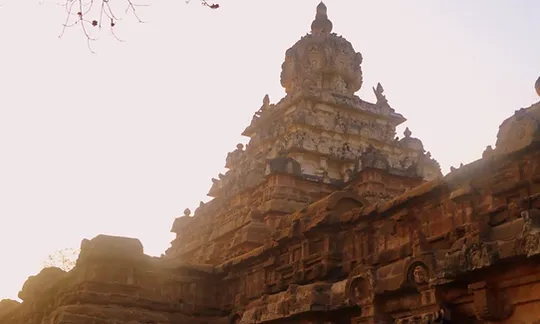
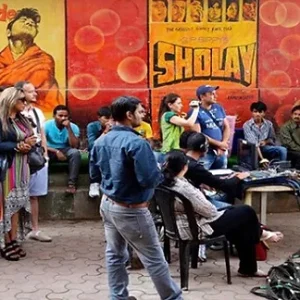
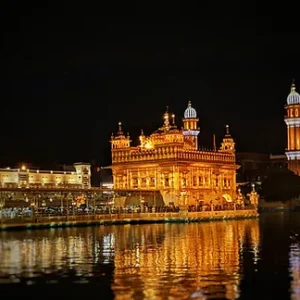
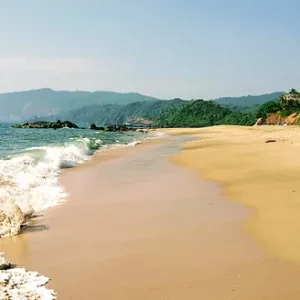
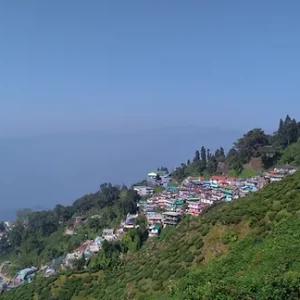
Reviews
There are no reviews yet.